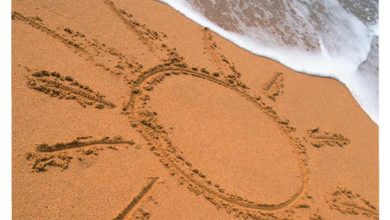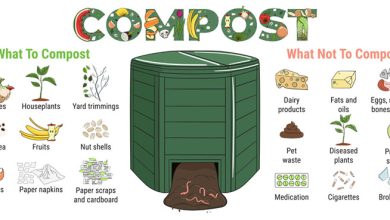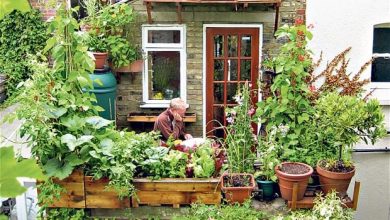Orchard Irrigation: Choosing the Type of Irrigation | When to water | how much to water

Irrigation in the orchard is a fundamental task and we must plan it well. Today we will see how to water an orchard and how to choose an automatic or manual irrigation system. Once you have chosen the irrigation method, you have to know how much to water and how often. Let’s see it!
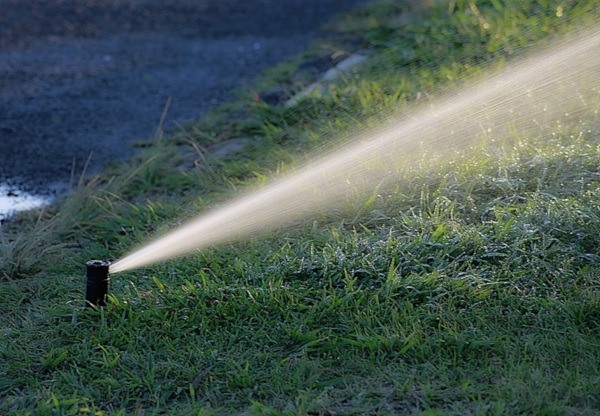
How should the irrigation of the garden be?
It is necessary to ensure that the substrate remains moist but without becoming flooded, so that the plants can grow and develop correctly.
The lack of water in periods with little rain and/or a lot of heat can cause «water stress» in the plant, which will produce less, or may even wither and dry out.
But excessive watering is also harmful, because the excess water that comes out from under the culture container takes part of the nutrients with it. In addition, the roots can suffocate because with so much water around they are not able to capture oxygen, and the chances of pests and diseases appearing, especially fungi, due to the humid environment that is generated around the plants also increase.
Irrigation in its proper measure, neither more nor less.

Therefore, you will have to be careful and water frequently with light irrigations, taking into account some important aspects on which the frequency and time of irrigation depend, such as:
- The water needs of crops (there are plants that need more water and others that need less).
- The size of the container (plants in small containers should be watered more often).
- The density of plants (the less volume of soil there is for each plant, the less amount of water can be stored and for less time, so you have to water more when there is little space between the plants than when the separation is greater).
- The type of substrate (some retain more water than others).
- The climate (water provided by the rains, temperature, sun…).
How much water does a garden need?
Naturally, plants need more water in summer than in winter, since if the temperatures are higher and the sun shines on the containers, the water will evaporate much faster. Conclusion: as a general rule it is enough to water once or twice a week in winter and in summer you should do it every day. In spring and autumn you will have to adjust the irrigation according to temperatures and rainfall.
The key is to check the humidity of the soil, either by sticking your finger in the substrate or a pencil, for example (if it comes out clean, without «stuck» soil, the substrate is very dry) or by using a moisture meter, a very useful gadget to know when to water and not too expensive.

The water that each plant needs is not exactly the same, so to make better use of it you can associate the crops in groups and give each one the right amount of irrigation, bearing in mind that there are more demanding crops and others, such as garlic or onion, are able to develop with less water:
- Little irrigation: garlic, onion, chickpeas, lentils or aromatic herbs such as lavender, rosemary, thyme, oregano…
- Medium irrigation: peas, tomatoes, cucumbers, turnips and some flowers that we use to drive away insects, such as basil, calendula or marigold.
- Abundant irrigation: Swiss chard, artichoke, celery, courgette, cabbage, leek…
If you have your garden in an area with little rain, you should choose less demanding crops (perennials) or, if you grow seasonal crops such as vegetables, water enough and be careful that the soil does not dry out.
What time is best to water?
When is it better to water the garden, in the morning or at night? It all depends on the time of year.
In the dry season (summer) it is better to water once the sun has set, so that the water evaporated due to the heat is less.
In winter, and especially if there is a risk of frost, it is not advisable to water at night because if temperatures drop too cold, water that is too cold can harm the roots.
How to water a vegetable garden
What method to use to water the garden? The first question we must ask ourselves to plan irrigation is manual irrigation or automatic irrigation? We will see below the advantages of watering the orchard manually or with an automatic system, as well as the irrigation systems of each type.
hand watering
If you have time and your garden is not too big, opt for manual irrigation with a watering can or with a hose, since it is a very effective way of watering, you will control the water applied and you can take the opportunity to take a look at your crops and check that have not been attacked by pests or diseases.

If you use a hose, you can incorporate a spray nozzle, to avoid making «holes» and puddles in the substrate. It is important not to wet the leaves of the plants too much, because this can cause fungi and other diseases to appear on them.
There are other types of manual irrigation traditionally used in rural gardens: furrow irrigation and flood irrigation. If you have a lot of water available (a tank, a well…) you can use one of these systems as they are very efficient and wet all the soil surrounding the roots.

Although they fulfill their function, surface irrigation is not convenient in an urban garden because it consumes too much water and is not efficient (there are large losses due to evaporation, much greater than in localized irrigation systems).
If you have chosen manual and not automatic watering, you will have to think about how to water the plants when you are not at home. You can buy watering pots or watering cones, which will keep enough moisture in the substrate for several days.

It is a very simple device, a kind of cone that is made of a porous material that receives water from a tank (bottle, bucket, carafe…) through a small plastic tube or directly by screwing it onto a bottle. You can buy them at any garden store or make a homemade watering pot (more information on how to do it in the post Watering on vacation: 3 homemade irrigation systems).
Automatic watering
If you have decided on automatic irrigation, you have to take into account that you will need to have a tap or other type of water intake nearby and, if this is not the case, you will have to install a tank at a certain height (two meters or more) so that the water down by gravity with sufficient pressure.
There are many options for automatic irrigation of the garden. The most used due to its multiple advantages is drip irrigation, but you can also install exuding tape irrigation (a drop-by -drop irrigation system using perforated hoses that are buried), micro- sprinkler irrigation or containers with built-in self-irrigation (tables of cultivation with a tank in the lower part that maintains constant humidity).
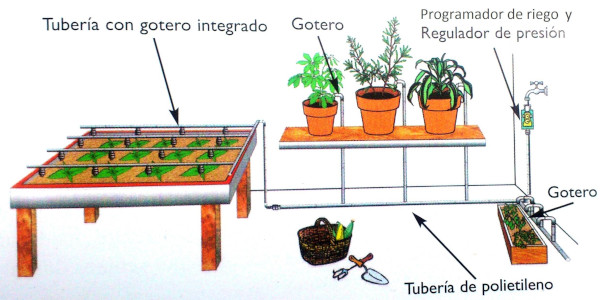
There is more information about the types of automatic irrigation in the garden in the post 6 Types of irrigation for your garden or orchard. In other articles we will also see the peculiarities, advantages and disadvantages of each irrigation method and how to install them. I hope you find it useful!
References
- Vallés, JM, 2007. The Urban Garden: organic farming manual on balconies and terraces. Serbal Editions. ISBN: 8476285078,
- Fernández Gómez, R., et al, 2010. Irrigation manual for farmers: module 4. Localized irrigation. Ministry of Agriculture and Fisheries of the Junta de Andalucía, Spain.
- Martín Rodríguez, A. et al., 2016. Garden irrigation manual. Ed. Junta de Andalucía, Ministry of Agriculture and Fisheries.

![Photo of White Soil Worm: [Characteristics, Detection, Effects and Treatment]](https://www.complete-gardening.com/wp-content/uploads/2022/08/white-soil-worm-characteristics-detection-effects-and-treatment-390x220.jpg)
